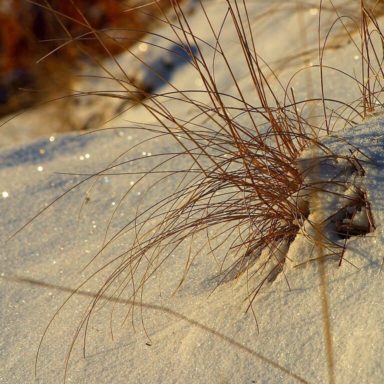Winter care for your backyard quail flock is simple. The birds need fresh water, good food, and protection from the elements. Raising quail is easy when you do the preparation work.
Fresh, unfrozen water is key to any livestock or animal under your care. For quail it is important they have access to water at a minimum of twice a day, but obviously more often or all day access is better.
Depending on your latitude, frozen water will be the main winter concern. While I have yet to find a system I am truly happy with using for a small flock of quail, here is what I have or am using. When I am keeping quail in smaller breeder cages with a water bottle or tray I have succumbed to changing it out twice a day. Here in the US Midwest the weather is variable so I can get away with this plan, but further north water can freeze in minutes.
I have also used a heated chicken watered in a colony cage. It held almost three gallons and at the time I have about 18 quail so it works well. While there are other options (fish tank heater, bird bath heater, stock tank heater, heated dog water bowl) they all require you to have electricity available at the cages.
I have not tried it myself, but I understand moving water does not freeze. There is also a gravity feed system from a pond which is something I don’t have access to in my backyard. I have also seen a system with a barrel buried in the ground to get the water below the freeze line and pumped up to the cage, then gravity drained back to the barrel. Not sure this would completely work in the colder climates, but I found it interesting.
Game bird feed is high in protein by definition. In the winter it is important the birds have high quality feed available at all times in order to generate body heat. Again winter weather is the concern here. On my breeder cage, the feeder is a tray mounted outside. So I have to work to clear snow from the feeder and replace any feed that has become wet from rain or melting snow. Soggy, wet food can freeze and become unavailable or worse moldy. On my colony cage the tray feeder is inside under cover and protected from the elements. In addition to quality feed a little extra fat in the birds diet during the colder months can help them build internal fat to stay warm as needed. A good source is meal worms, which can be purchased or grown. This is something you don’t want to over do creating obese unhealthy quail. Plus you want to back off towards the end of the cold season allowing the birds to return to normal weight.
Protection from the elements is both obvious and not. While your quail need protection from cold wind, rain, and snow. They also need fresh air and ventilation. It’s a balance. When I kept the quail in the breeder cage for winter, even though it had a roof I covered it with a tarp to block the wind and blowing rain/snow. There was still fresh air from underneath through the cage floor. It was more work because I had to watch the weather and remove it on warmer days. When using the colony cage, one end is already completely enclosed so all I do is cover the additional sides. I staple feed bags on all except the door allowing fresh air to enter and flow out the cage floor.
The colder months can be hard on your flock, but with a little work and planning it is survivable. I have yet to loose any quail to cold temperatures. One final thought, young and older quail would be the most vulnerable to bad weather. So I make it a point to only winter quail that are at least two months old and less than two years old. The two year olds are spring breeder that will be retired before the next summer. See my article on “When do quails stop laying eggs?” to see why.

